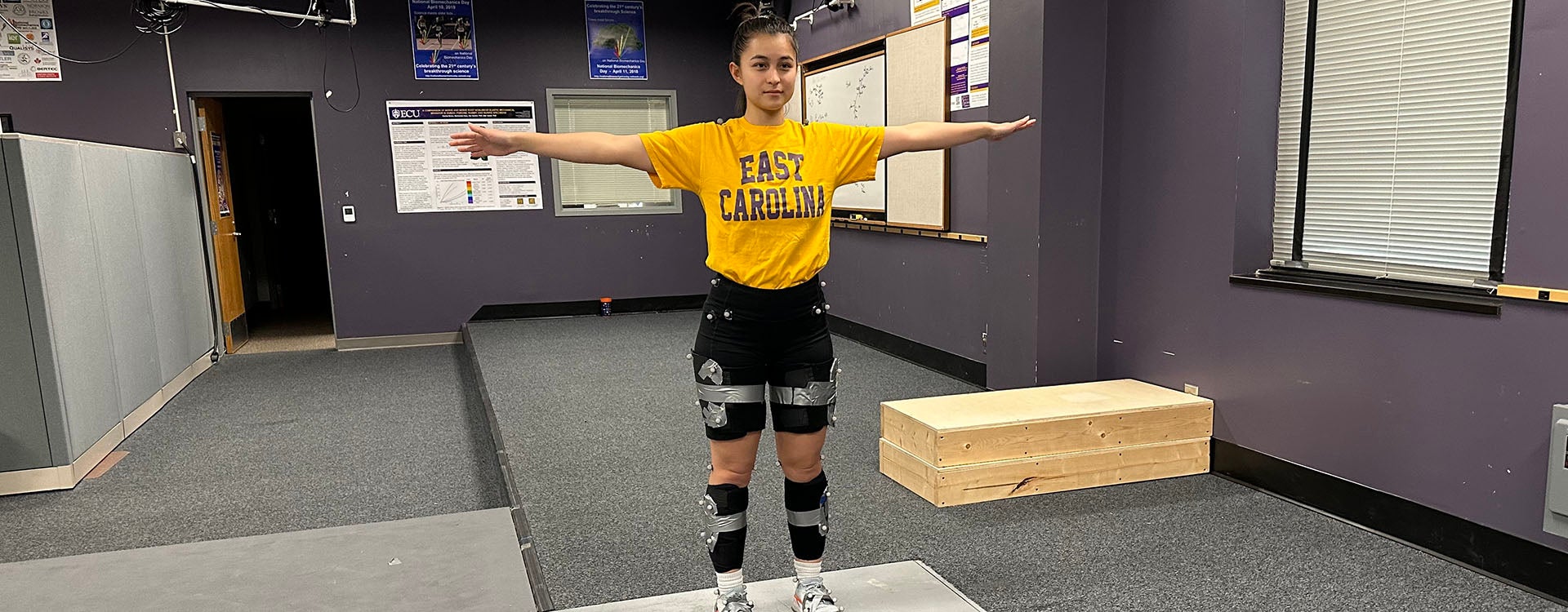Performance Optimization Lab
The mission of the Performance Optimization Laboratory (POL) is to help all people perform at their best. Human performance optimization is translational across many populations and tissue (healthy, diseased, and injured) states. Sport performance of athletes, mission performance of our nation’s warfighters, performing activities of daily living in older adults, and restoring and optimizing function to individuals’ post-injury are all examples of where human performance optimization is needed. The Performance Optimization Laboratory accomplishes its mission from a biomechanical perspective primarily, but is highly interdisciplinary and utilizes techniques and approaches from related fields such as neuroscience and physiology.
Student Research Opportunities
We have many opportunities for undergraduate students to get involved with research in the lab. POL Faculty mentor undergraduate students doing internships and independent research projects. If you are interested in applying for an internship in the lab, please email a cover letter and a copy of your resume to Dr. Domire (domirez@ecu.edu).
All graduate students in the lab are enrolled in the highly rated Biomechanics and Motor Control Concentration of the PhD or MS curriculum here at East Carolina University. Students will work with a POL faculty member to develop and execute a substantial research project as part of the curriculum.
Students interested in our PhD curriculum and application process can check out more information here.
Students interested in our MS program curriculum and application process can check out more information here.
Research Themes
Muscle Function Optimization
While appropriate muscle function is critical for the execution of human movement, deficiencies in muscular function negatively impacts human performance. Because neuromuscular deficits can persist post-injury adversely affecting long-term outcomes, identifying injury risk factors and improving strategies that prevent both initial and recurrent muscle injuries are critical components of performance optimization. The aims of this research theme are:
1) to identify characteristics of muscle structure and function that potentially increases injury risk and/or hinders human performance.
2) determine the effects of therapeutic interventions on optimizing muscle function and human performance in both healthy and injured populations.
Tissue Properties and Function Optimization
The material and structure properties of tissues throughout the body are tied to tissue function. At the cellular level, tissue properties influence mechanotransduction; at the tissue level material properties may indicate injury risk and at the organism level tissue properties change the way loads are applied to the body.
Improving Musculoskeletal Models
Musculoskeletal modeling is useful in performance optimization research to predict outcomes or to estimate difficult to measure variables. However, the usefulness of such models depends on their accuracy. In addition, in order for musculoskeletal models to successfully translate into more informed clinical decision making, the subject-specificity of these models could be improved.
Human Movement and Sport Performance Optimization
Optimizing task execution in healthy, active, and athletic populations is central to excellence in performance. Biomechanical analyses identifying known factors affecting task performance is critical to optimize performance. This research theme aims to:
1) Optimize baseball performance for both the throwing and hitting athlete.
2) Improve performance and outcomes in weightlifting and strength and conditioning drills.
3) Improve performance and reduce injury risks in athletic movements.
Using Virtual Reality to alter Human Movement
Virtual reality is a new and exciting area of biomechanics research. Understanding the biomechanical implications of utilizing VR systems is critical to utilizing these devices in testing, training and rehabilitation settings.
Affiliated Faculty


